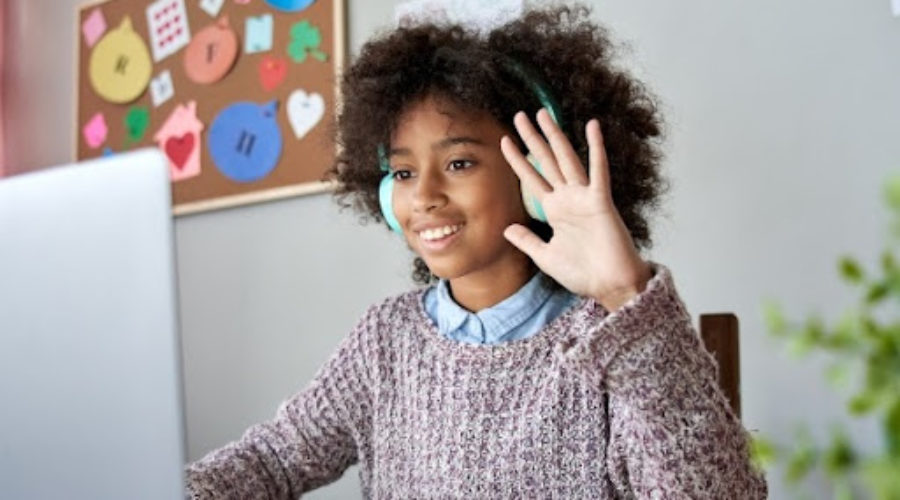
As a parent, you have the desire and responsibility to teach your children the habits and principles to help them live their best lives possible. Not only do children need education about reading and schoolwork, but they also need to develop the skills to take care of grooming and physical health.
Since eyesight is a critical factor that affects every aspect of life, parents need to help their children learn the best practices to protect their eyes.
The recommendations for protecting a child’s vision change, depending on the child’s age. Things you can do as a parent when your child is a baby are different from the recommendations you can follow for a teenager.
Since these needs change as the child grows, it’s crucial to maintain a relationship with a local eye doctor.
Regular eye exams and checkups help monitor the child’s vision and overall eye health. In addition, the eye doctor can provide education and information based on the child’s unique needs and diagnosis.
How are you teaching your children to protect their vision? Years ago, parents were concerned about accidents and injuries that could damage the structure of the eye – and cause vision issues.
These physical injuries continue to be a concern, but we also have modern factors that affect eyesight: digital devices and screens. As children spend more and more time looking at screens, we see a more significant impact on their vision and eye health.
Technology engagement is a necessity in our modern world. As a parent, there are a few things you can do to help your child learn good skills and find the balance between using technology and protecting their eyes at the same time.
Do you know how much your child’s visual skills affect their ability to learn and develop? Children use all of their senses, including eyesight, to pick up on information in the environment and learn from these experiences.
Children with vision issues often struggle to keep up in the classroom. If the child can’t see the board, then their education will be hindered by their eyesight.
Even if a child has 20/20 eyesight, other vision concerns could also impact a child’s education. For example, eye tracking is a critical skill that is necessary for reading and schoolwork.
A pediatric eye doctor performs a series of tests to check all vision factors that could be affecting the child’s development. Then, simple interventions can be used to improve the child’s eyesight and optimize overall results.
Teaching your child to protect their vision at a young age sets a strong foundation for healthy vision that lasts for years. These essential life lessons fall into several categories:
Certain activities could increase the risk of eye injury. However, just because there is a possibility of injury doesn’t mean that you should discourage your child from participating. Instead, these situations can help the child learn essential safety skills.
Here are a few things to teach your child about eye safety:
When your child is engaging in potentially harmful activities, make sure they are using eye protection. Examples include sports events, using power tools, or any other activity that could damage the eyes.
Eye protection tools are affordable and easy to find at local stores or online. For optimal protection, talk to your eye doctor about the activities or hobbies to determine the correct type of protection to be using.
Simple behavioral adjustments at home can reduce the risk of an eye injury. Examples include:
Children learn various skills by stepping out of their comfort zones. The best way to provide these learning opportunities is through contained environments, such as sports participation.
As the child is developing these skills, help them learn their physical limits. For example, be careful about pushing the child beyond participation levels that could lead to injury of the eyes or other parts of the body.
When spending time outside in the sun, it’s vital to protect the eyes against the damaging effects of UV rays.
Invest in a good pair of sunglasses for your child. Making sure the sunglasses fit increases the likelihood the child will continue wearing the sunglasses.
Also, a wide-brimmed hat can offer additional protection to keep the sun out of the eyes.
Children are curious and want to see everything around them. It’s fun to look up to see the blue sky, clouds, stars, and more.
Teach your children about the dangers of looking at the sun directly. Help them understand why they should never look at the sun.
If the eyes are itching or there is something in the eye, don’t rub it! A foreign object could make it worse because the rubbing motion can scratch the eyeball.
Teach your child to ask for help if there is something in their eye. Then, an adult can assist in removing the irritant safely.
Help your child learn how to limit the number of times they touch their eyes throughout the day. If they need to touch their eyes, then teach them to wash their hands first.
Infection can spread from person to person (or surface to person). For example, when the child’s hands come in contact with an infection-causing bacteria, then the bacteria can transfer to the eye when the hands touch the eyes or face.
If your child is old enough to wear contact lenses, then help them learn the proper care and cleaning to prevent infections. In addition, monitor the use of these lenses, including the timeline when the contacts need to be replaced.
Contacts can be great for children who can maintain the responsibility for proper care and keeping.
As the child is old enough to start wearing makeup, teach them proper makeup removal to minimize its effects on the eyes.
Also, teach the child never to share makeup with other people. Another important habit is to throw away old makeup to reduce the risk of infection.
Daily habits and lifestyle choices can affect overall health, which plays a role in vision and eye health. Therefore, teaching your child about these healthy habits is a meaningful way to set a strong foundation for good vision that lasts into adulthood.
Here are a few considerations to help your child with healthy habits that affect their eyes.
Many eye conditions have the best outcome when diagnosed in the earliest stages. Even though the risk of severe eye disease is higher in adults, there are still situations where children can be affected by vision-limiting eye conditions.
Regular eye exams serve two purposes:
Even if your child passes a vision screening at school, these basic testing procedures don’t compare with the in-depth services received through a local optometrist.
As a parent, you can help your child maintain healthy vision by following a regular schedule that includes eye examinations every year or two (or as often as recommended by your eye doctor).
Well-balanced nutrition provides the vitamins, minerals, and antioxidants necessary for helping the eyes function optimally. Prepare well-balanced meals for your family that include a range of healthy ingredients, including:
Carrots are a known ingredient to support eye health because of their beta carotene and other antioxidant properties. Other brightly colored fruits and vegetables can also provide vitamin C and other vision-protecting nutrients.
Moving the body helps reduce the risk of a variety of severe health conditions, including heart disease and diabetes.
Since diabetes is a growing problem in the United States, it’s more important than ever to implement healthy habits in childhood to prevent Type 2 diabetes in the later years of life.
Untreated diabetes can result in vision loss and even blindness. But these issues are preventable through a healthy diet and regular exercise to manage the blood sugar levels.
Teaching your child not to give in to the peer pressure of smoking is an essential step to protecting their vision. Smoking increases the risk of certain eye diseases, which can lead to a loss of vision.
Lead with example by not smoking around your children. Even second-hand smoke can take a toll on overall health.
Certain eye diseases can be genetic, which means that there is a higher risk of developing the disease because of family history. If you have anyone in your family diagnosed with a vision disorder or eye problem, then share this information with your eye doctor to ensure proper screening is done.
Your optometrist can use this information and watch for signs of eye conditions that could affect the child’s immediate vision and future eye health.
People of all ages spend hours a day looking at screens: smartphones, laptops, TVs, tablets, and more. Technology can be a good resource for education and learning, but too much screen time can affect a child’s vision.
Follow these tips to minimize the risk of digital eye strain:
Encourage your children to enjoy activities away from the screen, such as playing with toys or spending time outside.
Many parents set limits on the amount of screen time the children can have each day. Decide on the right balance for your family, then set clear rules to manage the amount of time the children are looking at screens.
If the child needs to spend time at the computer for schoolwork or entertainment, set a timer to know when to take a break.
Follow the 20-20-20 rule: have the child take a break from the screen every 20 minutes. This break should be at least 20 seconds long, and they should look at something that is at least 20 feet away.
Did you know that spending at least an hour a day outside can reduce the risk of certain eye conditions, such as myopia?
Children need to have opportunities to practice both near vision and far vision activities. In addition, changing the environment and activities can help the eyes relax since the child can look at objects in the distance.
Outdoor activities are especially important after the child spends an extended period of time on near vision activities, such as using a digital device, playing with puzzles, or reading.
When was the last time your child had a comprehensive eye exam? If it’s time to meet with an optometrist, we invite you to book an appointment at one of our nearby locations. At EyesNY, we offer full-service vision care for the whole family. Call us today!
Malta
658 Malta Ave., Ste 101
Malta, NY 12020
Phone: (518) 580-0553
Saratoga Springs
414 Maple Ave Ste 200
Saratoga Springs, NY 12866
Phone: (518) 580-0553
Clifton Park
1712 U.S. 9
Clifton Park, NY 12065
Phone: (518) 580-0553
Queensbury
535 Bay Road
Queensbury, NY 12804
Phone: (518) 580-0553
Troy
2200 Burdett Street Ste 206
Troy, NY 12180
Phone: (518) 580-0553
